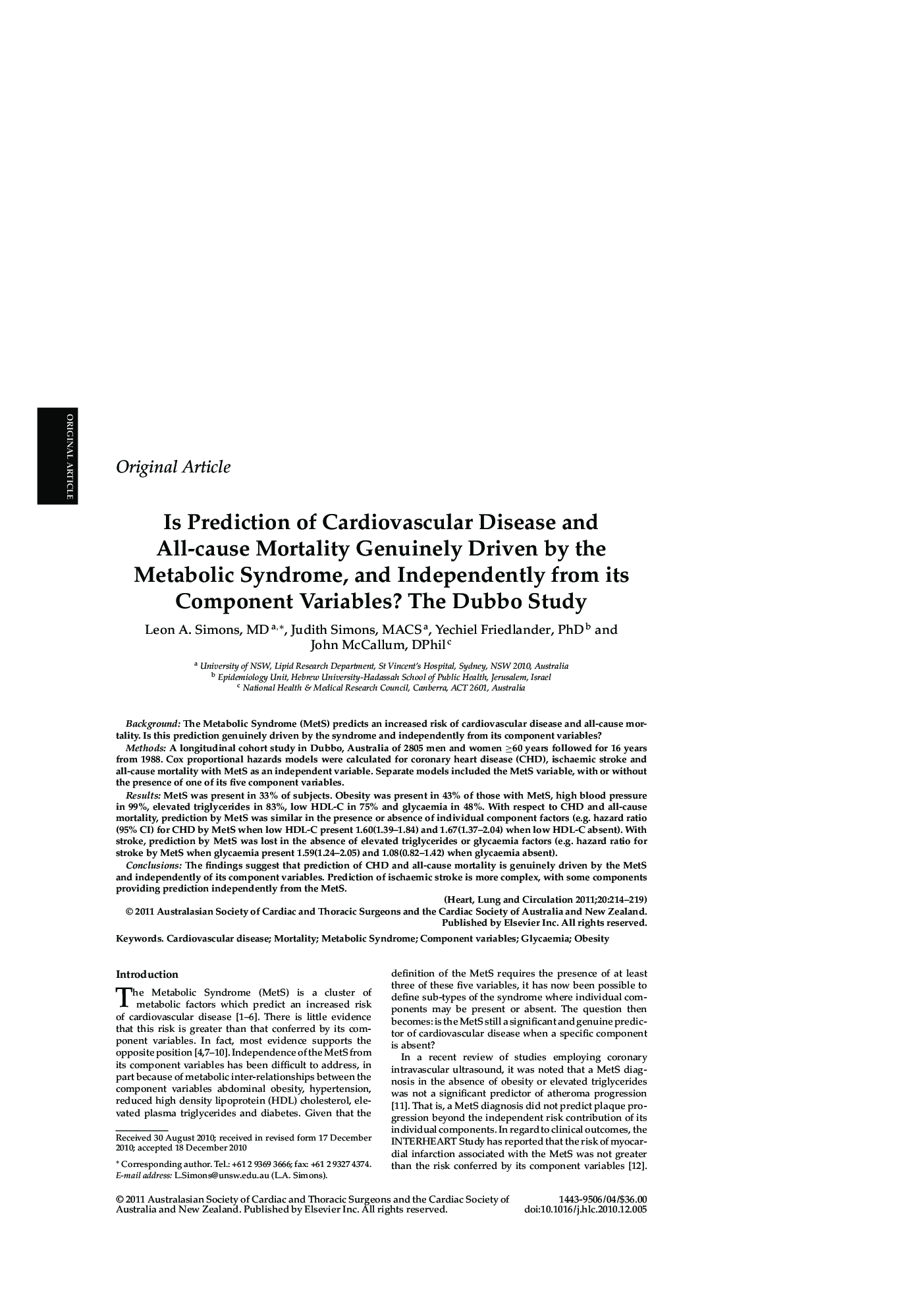| Article ID | Journal | Published Year | Pages | File Type |
|---|---|---|---|---|
| 2919310 | Heart, Lung and Circulation | 2011 | 6 Pages |
BackgroundThe Metabolic Syndrome (MetS) predicts an increased risk of cardiovascular disease and all-cause mortality. Is this prediction genuinely driven by the syndrome and independently from its component variables?MethodsA longitudinal cohort study in Dubbo, Australia of 2805 men and women ≥60 years followed for 16 years from 1988. Cox proportional hazards models were calculated for coronary heart disease (CHD), ischaemic stroke and all-cause mortality with MetS as an independent variable. Separate models included the MetS variable, with or without the presence of one of its five component variables.ResultsMetS was present in 33% of subjects. Obesity was present in 43% of those with MetS, high blood pressure in 99%, elevated triglycerides in 83%, low HDL-C in 75% and glycaemia in 48%. With respect to CHD and all-cause mortality, prediction by MetS was similar in the presence or absence of individual component factors (e.g. hazard ratio (95% CI) for CHD by MetS when low HDL-C present 1.60(1.39–1.84) and 1.67(1.37–2.04) when low HDL-C absent). With stroke, prediction by MetS was lost in the absence of elevated triglycerides or glycaemia factors (e.g. hazard ratio for stroke by MetS when glycaemia present 1.59(1.24–2.05) and 1.08(0.82–1.42) when glycaemia absent).ConclusionsThe findings suggest that prediction of CHD and all-cause mortality is genuinely driven by the MetS and independently of its component variables. Prediction of ischaemic stroke is more complex, with some components providing prediction independently from the MetS.
